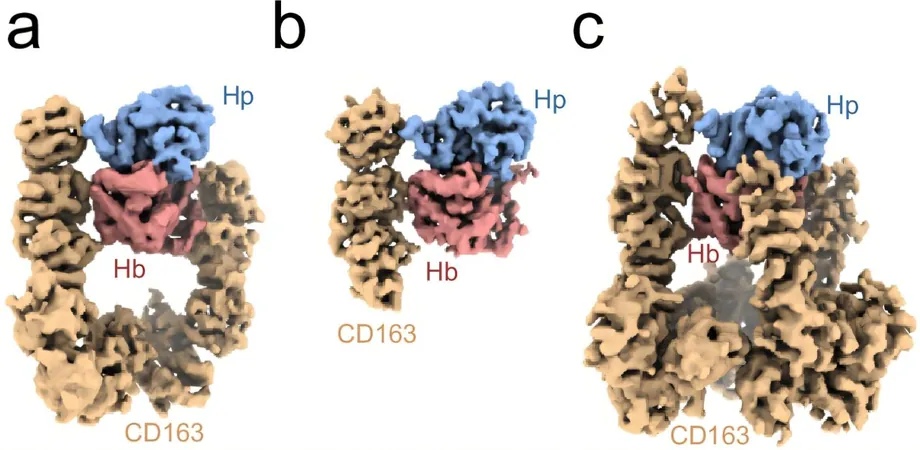
Groundbreaking Discovery: The Mapping of the Blood Defense Receptor CD163
2025-03-27
Author: Yu
In a groundbreaking study that could change our understanding of the human body’s defenses, researchers at Aarhus University have successfully mapped the function of the CD163 receptor, a crucial player in our immune response. This innovative research, detailed in the prestigious journal *Nature Communications*, sheds light on a topic that, while not glamorous, is critically important for health.
When our bodies face severe infections like malaria, red blood cells can break down, releasing a toxic substance—hemoglobin—into the bloodstream. This can lead to devastating oxidative damage due to the interaction between hemoglobin and oxygen, producing reactive oxygen species that can wreak havoc on blood vessels, kidneys, and vital organs, leading to complications including inflammation, organ failure, and blood clots.
Luckily, our bodies are equipped with a formidable defense system. Haptoglobin, a blood protein, acts like a first responder, binding to hemoglobin and neutralizing its harmful effects. The real hero, however, is the CD163 receptor, located on the surface of macrophages—immune cells that engulf and digest cellular debris. The newly unveiled structure of CD163 provides critical insights into how it binds and internalizes the haptoglobin-hemoglobin complex, a process that has remained elusive until now.
Associate Professor Christian Brix Folsted Andersen, who leads the research team, remarked on the significance of their findings: “We have been building upon our previous work on haptoglobin and hemoglobin interactions. With this new research, we reveal how CD163’s unique structure allows it to effectively detect, bind, and uptake the haptoglobin-hemoglobin complex. This is a major breakthrough that integrates previous structural and functional understanding.”
But this research is only the beginning. The implications of their findings are vast. Andersen highlighted potential avenues for future study, suggesting that understanding the evolutionary development of CD163 could unveil similar mechanisms in other species. Furthermore, the research team is keen to explore how CD163 interacts with other proteins and molecules in the body, which could have significant implications for understanding various diseases and developing new therapies.
In a world increasingly challenged by infectious diseases, this advancement in our understanding of the immune system’s inner workings could pave the way for novel treatments and preventive strategies, making CD163 not just a mere name, but a beacon of hope in the realm of medical research.



 Brasil (PT)
Brasil (PT)
 Canada (EN)
Canada (EN)
 Chile (ES)
Chile (ES)
 Česko (CS)
Česko (CS)
 대한민국 (KO)
대한민국 (KO)
 España (ES)
España (ES)
 France (FR)
France (FR)
 Hong Kong (EN)
Hong Kong (EN)
 Italia (IT)
Italia (IT)
 日本 (JA)
日本 (JA)
 Magyarország (HU)
Magyarország (HU)
 Norge (NO)
Norge (NO)
 Polska (PL)
Polska (PL)
 Schweiz (DE)
Schweiz (DE)
 Singapore (EN)
Singapore (EN)
 Sverige (SV)
Sverige (SV)
 Suomi (FI)
Suomi (FI)
 Türkiye (TR)
Türkiye (TR)
 الإمارات العربية المتحدة (AR)
الإمارات العربية المتحدة (AR)